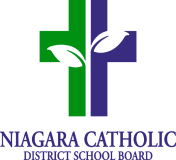 APPENDIX F
APPENDIX F
Back to top
ELEMENTARY & SECONDARY
Back to top
NEWSLETTER INSERT
[To inform school community about Anaphylaxis]
ANAPHYLAXIS POLICY
At the beginning of every school year, we remind all students and parents/guardians of our Board's Anaphylaxis Policy.
At ______________________________ [school name] we have Emergency Procedures, which clearly state what medical procedures must occur for those students who have various life-threatening medical conditions.
We are reminding all students and parents/guardians that we have students in our school who are known to have a potentially life-threatening allergy called Anaphylaxis.
Anaphylaxis is a serious allergic reaction that is rapid in onset and may cause death. While fatalities are rare, anaphylaxis must always be considered a medical emergency requiring immediate treatment.
Symptoms of anaphylaxis generally include two or more of these four body systems: skin, respiratory, gastrointestinal and/or cardiovascular. However, low blood pressure alone (i.e. cardiovascular system), in the absence of other symptoms, can also represent anaphylaxis. Breathing difficulties and low blood pressure are the most dangerous symptoms and both can lead to death if untreated. Anaphylaxis is an unpredictable condition as signs and symptoms can vary from one person to the next and from one episode to another in the same person.
In Canada, the most common food allergens that cause anaphylaxis are: peanut, tree nuts (almonds, Brazil nuts, cashews, hazelnuts, macadamia nuts, pecans, pine nuts, pistachios, walnuts), milk, egg, seafood (fish, shellfish, crustaceans), soy, wheat, mustard and sulphites (a food additive).
Anaphylaxis requires immediate first aid response and immediate medical intervention.
Back to top
 APPENDIX F
APPENDIX F
 APPENDIX F
APPENDIX F